Something in the Aether
Current Date: October 16, A.U.C. 1217
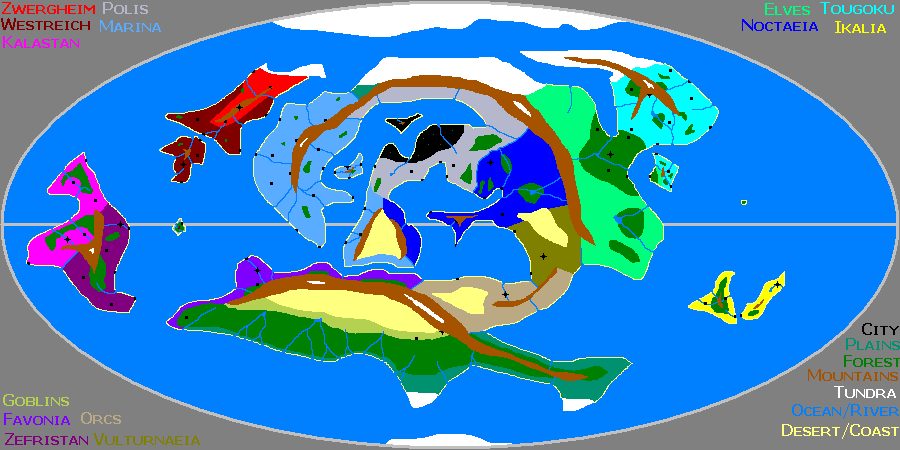
Rules
*Ability scores are determined by 36 point buy.
*Hit points at level 1 are the maximum for your class's hit die. Hit points at higher levels are 3/4 of that maximum (i.e., for d4, d6, d8, d10, and d12 respectively, the value is 3, 4, 6, 7, and 9).
*Characters start with 47,000xp, i.e. level 10 plus 2000.
*Characters start with 49,000gp to spend freely on mundane and magic items, as well as crafting them with the appropriate feats and the 2000xp provided.
*The same restrictions on multiclassing as given in the RAW apply; HOWEVER, the fraction base attack / save rule is allowed. Sum up the base values for each class, only rounding down when you have the total for all classes:
Low BA (0,1,1,2...) = 1/2 class level
Medium BA (0,1,2,3...) = 3/4 class level
High BA (1,2,3,4...) = class level
Low Save (0,0,1,1...) = 1/3 class level
High Save (2,3,3,4...) = 2 + 1/2 class level
For example, normally a wizard 5 / cleric 5 has BA +2 as a wizard and +3 as a cleric, for a total of +5. By this system, the BA derived from wizard levels is 5 x 1/2 = 5/2 = 2 1/2; and the BA derived from cleric levels is 5 x 3/4 = 15/4 = 3 3/4. 2 1/2 + 3 3/4 = 6 1/4, so the final BA is +6.
*The class-based defense value variant will be allowed. This value is a generic AC bonus that stacks with all other types EXCEPT an armor bonus. The value is determined by a simple formula, based on the highest armor proficiency your character has gained from a class:
None: 2 + 1/3 class levels (now 5)
Light: 3 + 1/3 class levels (now 6)
Medium: 4 + 1/3 class levels (now 7)
Heavy: 6 + 1/3 class levels (now 9)
*The armor as damage reduction variant will also be allowed. If you do wear armor, instead of gaining an armor bonus, you gain half of the armor's bonus (rounded down) as DR x/-. All normal penalties and limitations associate with wearing armor still apply. Contrary to the version presented in Unearthed Arcana, a magical enhancement bonus does increase the DR provided, just as if the original armor bonus were higher. Spells such as mage armor function within this system -- mage armor, for instance, provides DR 2/- instead of AC +4.
*Just so you're sure, shields work the same as they always did, providing a simple shield bonus to AC.
*Renaissance-era firearms and explosives are available. Rules are as in DMG 3.5 p145, reprinted here for your convenience. You can expect to find these in Polis, Marina, Noctaeia, Kalastan, Zwergheim, Westreich, and Favonia, but not anywhere else.
Powder Keg: Weighs 5 pounds, comes with 15 pounds of gunpowder (tot. 20 pounds). An ounce (16 of these in a pound, so 240 uses) of this powder burns for 1 round, illuminating like a sunrod, or it can be used to fire a bullet. 250gp.
Powder Horn: Carries 2 pounds (32 uses) of gunpowder. This one is water-resistant. 35gp.
Bag of Bullets: Carries 10 rounds and weighs 2 pounds. 3gp.
Pistol: One-handed ranged weapon, requires Exotic Weapon Proficiency (Firearms) to use properly. Standard reload time is 1 standard action, but the Rapid Reload (Firearms) feat reduces this to 1 move action. 1d8 small / 1d10 medium. Crits on 20 for x3. Range increment is 50ft. Weighs 3 pounds. Deals piercing damage. 250gp.
Musket: Two-handed ranged weapon, requires Exotic Weapon Proficiency (Firearms) to use properly. Standard reload time is 1 standard action, but the Rapid Reload (Firearms) feat reduces this to 1 move action. 1d10 small / 1d12 medium. Crits on 20 for x3. Range increment is 150ft. Weighs 10 pounds. Deals piercing damage. 500gp.
Bomb: Grenade-like weapon. Takes 1 move action to light. Deals 2d6 fire damage in a 5ft blast radius (reflex 15 half). Range increment is 10ft. Weighs 1 pound. 150gp.
Smoke Bomb: Grenade-like weapon. Takes 1 move action to light. 2 rounds after lighting, it emits a 20ft radius cloud of smoke (as the spell fog cloud). Range increment is 10ft. Weighs 1 pound. 70gp.
*Classes: The following classes are legal.
Barbarian
Bard
Cleric (see major religions below)
Druid
Fighter
Monk
Paladin (standard or freedom variant)
Ranger
Rogue
Sorceror
Wizard
Shugenja
Samurai
Warmage
Scout
Healer
Marshal
Psion
Psychic Warrior
Soulknife
Wilder
Ardent
Divine Mind (see major religions below)
Lurk
Incarnate
Soulborn
Beguiler
Dragon Shaman
Duskblade
Knight
Crusader
Swordsage
Warblade
Hexblade
Warlock
Totemist
Spirit Shaman
Swashbuckler
Favored Soul (see major deities below)
Archivist
*Races: The following races are legal. Human "subraces" have no unique bonuses or penalties save languages.
Human (Politan: may select one other human language for free)
Human (Marinan: knows Marinan language for free)
Human (Noctaeian: may select one other human language for free)
Human (Tougokujin: knows Tougokugo language for free)
Human (Kalai: knows Kalai language for free)
Human (Ikalian: knows Ikalian language for free)
Elf (High)
Elf (Wood)
Elf (Grey)
Elf (Wild)
Half-Elf
Dwarf (Hill)
Dwarf (Deep)
Dwarf (Mountain: +2 strength and -2 dexterity)
Gnome (Rock)
Halfling (Lightfoot)
Orc
Half-Orc
Goblin
Hobgoblin*
Planetouched (Aasimar)*
Planetouched (Tiefling)*
Planetouched (Chaond)*
Planetouched (Zenythri)*
Warforged**
Warforged (Scout)**
*These races carry a +1 Level Adjustment
**Warforged are manufactured exclusively in Polis
*Feel free to pull feats, spells, and prestige classes from the Complete series, Spell Compendium, Forgotten Realms, Dragonlance, and Eberron. Prestige classes may have to be adapted slightly to fit the world.
Setting
In the year 805, the world fell to the edge of ruin. A group of six villains, calling themselves the Apostles of Samael, succeeding in resurrecting Samael, the primal divine entity who first breathed darkness into the hearts of mankind over ten millennia ago. Though much diminished by his former struggle with his original nemesis, a mortal king named Amon, Sammael worked personally and through his minions to bring a veil of darkness upon the world. He summoned five Lords of Hell and five Princes of the Abyss, all of them his minions, and mustered the villains of the world, bringing devastation and genocide to the peoples of the world. Only through the actions of the legendary heroes Sophitia, Spencer, Lucius, Koric, Elohim, Adriana, and Darkeyes would Samael and his greatest disciple Leon -- Sophitia's brother -- finally be defeated.
Through the actions of these heroes and their allies, the destruction that had been wrought was eventually purged and the world began to be restored to its former glory, though many of the non-human races had suffered terribly from the conflict, known in some places as Ragnarok and in others as simply the War of the Apocalypse. In the wake of tragedy, the world's governments were cleansed of much of their corruption and the people were set to greater order and justice. New kingdoms have been formed out of the old nations, and people generally believe that the world is a little wiser for the experience.
In those past four centuries, some of the world's kingdoms have developed the beginnings of industry. And, though not on so cosmic a scale, conflict is ever a threat: men have devised the first gunpowder weapons, and the people of the world are starting to realize that they have power. As a result, the states that still cling to old-fashioned notions of autocratic right are in a precarious position.
Politics
Polis: republic ruled by the Politan Senate
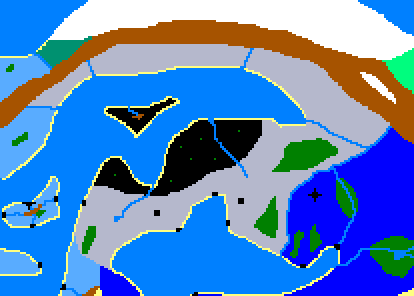
79% human (Politan)
9% human (Marinan)
5% human (Noctaeian)
3% halfling
2% half-elf
1% elf
1% others
National Languages: Common, Celestial
National Cult: Bast
Aptly named Polis is distinguished primarily by the vast nation-city that occupies the majority of its terrain. Around twelve centuries ago, a sage named Sesoron appeared in the region and aided the locals in a war against the neighboring Noctaeians. Afterwards, he used his fantastic magical abilities to engineer a city that just kept growing: using his powers, he gave the city magically automated light, plumbing, and transportation. The founding of Polis signifies the start of the calendar still in use today. The nation was very isolationist and inwardly focused, never daring to invade foreign land. What's more, Sesoron just kept living: in the year 642, he founded an academy where promising students learn the arts of combat and magic, and it remains a prestigious place for youths to begin adventuring careers.
But, in 805, with the resurrection of Samael, Sesoron seemed to lose his mind. After he ordered the annexation of Zwergheim on questionable legal ground, he soon departed to the demon-infested battlegrounds in the south of what is now Elven territory, where he was stopped from joining with Samael by Sophitia et al.
The legendary heroes and their allies, including several graduates of the academy, then set about framing a new constitution for the nation that had had only Sesoron as government for eight centuries. The temporary council they established was replaced by the Politan Senate, a body of 200 advisors who rotate the position of Speaker every three months. The race known as Warforged, initially designed by Sesoron and a Noctaeian mage named Sasha Mihailovich, is still manufactured and used as an efficient and obedient police force.
Marina: republic ruled by pairs of consuls
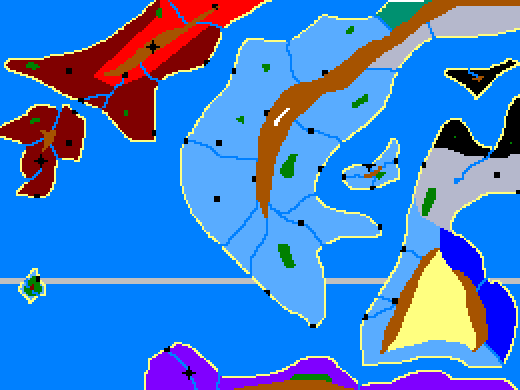
79% human (Marinan)
9% human (Politan)
5% human (Kalai)
3% halfling
2% goblin
1% hobgoblin
1% others
National Languages: Marinan, Common, Infernal
Marina has always been the world's premier naval power. Since 589, the Marinan Emperor had commanded the obedience and taxes of people on three continents. They controlled the seas between Kalastan, Goblin Country, and their own lands, so they were free to choke off trade with these places at a moment's notice. They warred off and on with the Kalai and Goblins for centuries, constantly gaining and losing ground.
The abundance of trade going through Marina facilitated the development of a significant black market. In addition to an institutionalized Thieves' Guild and Assassin's Guild, the nation boasted a network of three powerful mafia families, and a booming market for piracy. It is suspected that these groups are still operating today.
When Samael was restored to power in 805, he summoned Asmodeus, Lord of the Ninth Layer of Hell, to assist the corrupted Emperor Falco in oppressing the people. Their treachery was subtle, though, and swift action by the Church of Heimdall managed to save many lives. And once Asmodeus was defeated by a group of Tiamat's followers, the people of Marina began to establish a republic that has been successful to this day. Every year, two executives called Consuls are elected to rule in tandem.
In the four centuries that have elapsed, Marina has withdrawn its sphere of influence to its own continent, for the most part. Marinan expatriates have played a major role in the new kingdoms of Westreich, Favonia, and Zefristan. It is believed that the advent of steamships will revolutionize the way business -- legitimate or not -- is done in Marina.
Noctaeia: parliamentary monarchy ruled by King Branimir Rusic VI
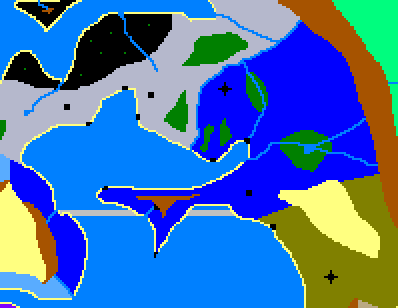
79% human (Noctaeian)
9% human (Politan)
5% halfling
3% half-orc
2% half-elf
1% orc
1% others
National Languages: Common, Draconic
National Cult: Hecate
One of the first nations to become significant on the world stage, Noctaeia waged a war against the progenitors of Polis twelve centuries ago, under the reign of a wicked necromancer. Due to the interference of Sesoron, however, Noctaeia was almost completely disarmed, rendered practically a vassal kingdom to Polis.
The country was fairly quiet until 803, when its leader Duke Branimir obtained an artifact that allowed him to bring eternal night over the city. They say he had done this in order to appease the object of his affections, a vampire sorceress who was doing business in his city. During a seige by a legion of orcs under one of Sammael's Apostles, however, the artifact was destroyed and daylight returned.
And in 805, the summoning of Orcus, Demon Prince of the Undead, brought yet another shade over the country. It was not long, however, before the Duke, his vampire friend, and her orc lover, a specimen raised in Polis from an early age, fought back and, with the aid of the followers of Tiamat, purged the undead from Noctaeia.
After the fall of Sesoron, though, Noctaeia was allowed to again become a kingdom in its own right. The descendents of Duke Branimir took up the throne and instituted a parilamentary system to ensure that the people would be heard. Natives of Noctaeia are now significant participants in the administration of the recently formed state of Vulturnaeia, and both countries are generally at peace with the rest of the world.
Elves: magocracy ruled by High Magus Sydrimellon
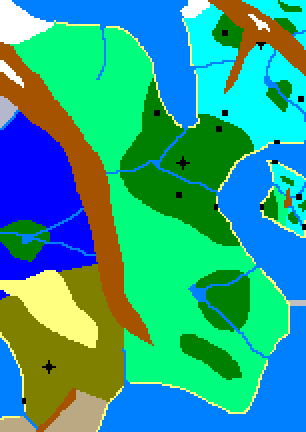
96% elf
2% half-elf
1% human (Tougokujin)
1% other
National Language: Elven
The elves have tended and protected their forest for millennia, as it has guarded them from the harshness of the outside world. They have been historically very isolationist, though they have always maintained positive relations and trade with Tougoku. The elves have long been bitter rivals of the orcs, whose territory has been historically near to their own.
When Samael returned in 805, however, the elves were beset on both sides by the threat of destruction. In the north of their own territory, the massive demonic ooze known as Juiblex, Lord of Corruption and Pollution, invaded, turning acres of the forest into an unliveable mess. The elves were unable to repel this creature until several followers of Tiamat, spearheaded by a warrior riding a green dragon, arrived to join the battle. Afterwards, though, the elves were not unable to reclaim the land for over two centuries.
But to the south, by the agency of Samael, the Blood War had spilled onto the mortal realms, and demons and devils alike did battle with one another, ruining the once pristine landscape. After Samael was destroyed, the elves took it upon themselves to restore the land, tending it for many years.
More recently, many half-elves have taken to cultivating the fields outside their forest, creating villages and towns where once there was only wilderness.
Zwergheim: monarchy ruled by King Valgard IV
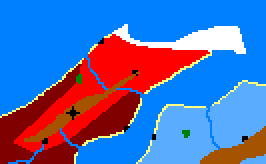
79% dwarf
9% gnome
5% human (Marinan)
3% halfling
2% human (Politan)
2% other
National Language: Dwarven
National Cult: Heimdall
The ancient kingdom of the dwarves was once far greater than it is today. The dwarves of old carved out magnificent tunnels in their mountains and used the rock to build great works elsewhere, as dwarves are wont to do. Indeed, most of their ancient stonework still stands in the territory they used to govern. Being unused to sea travel, the dwarves usually enlisted the aid of Marina to transport their many works throughout the world.
Shortly before the rise of Samael, a wicked dwarf deposed the king, who was his cousin, then becoming a tyrannical ruler. It was later discovered that he had secretly become a member of the Cult of Samael, but the rightful king's exiled son returned to slay him before Samael could be restored. The kingdom was briefly in the hands of this negligent ruler, though he soon left, leaving Zwergheim helpless when a human girl necromancer swept into the mines, murdering and animating all who stood before her. She was eventually driven out by an unknown savior.
But it was not long before, as a result of the neglectful king's actions, Sesoron found it necessary to take Zwergheim into his custody. The bigoted madman who led the garrison, known as the prototype of the Warforged, enacted a bloody holocaust on the dwarves, and their numbers were severely reduced.
Even after the fall of Sesoron, when Zwergheim was again granted sovereignty under a new dwarven leader who had rallied his people, there were not enough dwarves left to fully populate all their old territory, so they clustered in the cities to the north of their homeland. The remainder of the dwarven lands were divided up between Marina and a fledgling kingdom of dwarves and Marinans calling itself Westreich.
Westreich: feudal monarchy ruled by King Rendi Svenson IX
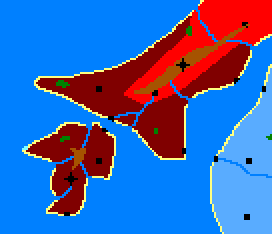
37% human (Marinan)
20% dwarf
18% gnome
10% halfling
7% human (Politan)
5% half-elf
3% others
National Languages: Common, Marinan, Dwarven
National Cult: Heimdall
Westreich is an assimilation of dwarven and Marinan culture, first declaring itself as a sovereign government in 873. They have proven very successful in their first three centuries, enjoying the benefits of dwarven craftsmanship and Marinan shipwrighting. It was in Westreich that the first steamships were built in 1196.
Westrian culture is technologically progressive, but physical prowess in warfare is prized even moreso. The kings of Westreich are expected to be the greatest warriors and hunters in the land.
Orcs: various clans
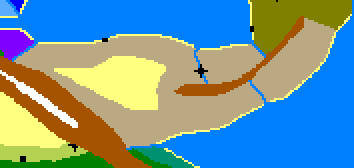
96% orc
2% half-orc
1% human (Noctaeian)
1% other
National Language: Orcish
Throughout their brief history, the orcs have been a disorganized patchwork of warlike clans. They were constantly at war with eachother and with the elves, until shortly before the return of Samael. An orc warlord became powerful enough that he commanded all of the orc tribes at once in the name of Samael, and he used this newly organized army to expand and consolidate orc territory.
After Samael was raised and the Blood Wars were brought to the mortal world, this warlord eagerly participated in the devastation. It took the legendary heroes to stop him, his army, and their demonic allies. With the loss of their greatest leader, the orcs abandoned the servitude of Samael and returned to their homeland, severely diminished in power.
The Noctaeians claimed much of the territory that had once belonged to the orcs, and many of them mingled with the orcs in their northern lands. Eventually, many of the orcs splintered off to join the Noctaeians in creating a new free society, establishing a new state called Vulturnaeia.
Vulturnaeia: democracy
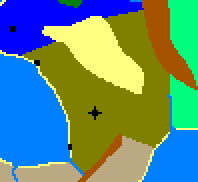
37% human (Noctaeian)
20% orc
18% half-orc
10% halfling
7% half-elf
5% human (Politan)
3% other
National Languages: Common, Orcish
Vulturnaeia is a free land founded in 955 by Noctaeian expatriates and orcs desiring a more civilized way of life. Each of the country's three city-states governs its own affairs by way of a free council of citizens. The city-states have mutual protection agreements with one another, but aside from that the people of Vulturnaeia have no military aspirations. Even a substantial minority of half-elves coexist with orcs here, though they often represent the opposite ends of debates in council.
Goblins: tribal structure

79% goblin
14% hobgoblin
5% bugbear
2% other
National Language: Goblin
National Cult: Tiamat
The goblin history of barbarism nearly matches the orcs, but they have been largely too isolated to wage any campaigns against their racial enemies, the dwarves. They have had ample opportunities, however, to war with the invading expansionist Marinans. Their northwestern territories often fell in and out of Marinan hands. Over the years, being sandwiched between the world's harshest desert and its most savage rainforest has significantly slowed the progress of goblin civilization. The goblins did develop a social structure, though: at the top were goblin wizards, who command the hobgoblin warriors; lowest were the bugbear thugs and the remainder of the civilians.
During the War of the Apocalypse, a goblin leader who was one of Samael's Apostles managed to muster his people to repulse the Marinans decisively. A faction of hobgoblins, led by a warrior named Yasar, who disagreed with Samael's actions attempted to stage a revolt. Although the goblin Apostle was defeated in battle, Samael himself intervened, killing Yasar as well. He then began to enact genocide upon the goblins for their leader's failure. Other business drew him away, though, leaving the followers of Tiamat to clean up the situation, routing many of the summoned devils.
The goblins were wholly devastated by the war, but they slowly began to rebuild what little there ever was of their society. Many of them and most of the hobgoblins seceded to join the Marinans in founding Favonia.
Favonia: republic ruled by Prime Minister Gaius Aegatus
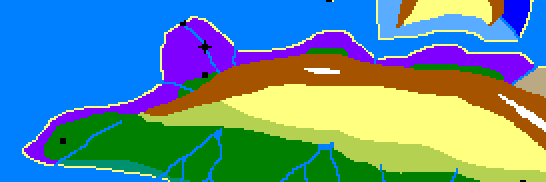
37% human (Marinan)
20% goblin
18% hobgoblin
10% bugbear
7% halfling
5% human (Kalai)
3% other
National Languages: Common, Marinan, Goblin
The year 903 saw the formation of a new republic, the state of Favonia. The integrated mix of goblinoids and Marinan humans who were already living in the west of former Goblin territory drafted their constitution with the goal in mind of building a peaceful and profitable trading hub, dealing out rare goods from the jungles to the south as they serve as a save harbor to ships from east and west. The government is controlled by a diverse senate, picked deliberately to represent the interests of human and goblinoid alike, and an elected prime minister who conducts the business of government and makes executive decisions.
While peace is in the greater interest of Favonia, the republic funds a well-trained army and navy to dissuade bullying by their Marinan progenitors. Hobgoblins serve as some of the most influential and well-respected warriors in Favonia's armed forces.
Kalastan: monarchy ruled by King Ramesh XXIII
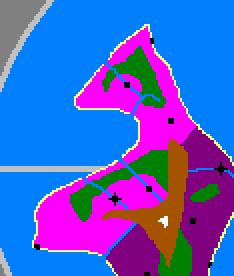
96% human (Kalai)
2% human (Marinan)
1% goblin
1% other
National Languages: Kalai, Draconic
National Cult: Bahamut
The nation of Kalastan has been tempered by centuries of conflict with Marina. While the entire Kalai land mass was once under the reign of these people, the eastern edge has fallen in and out of Marinan hands throughout the history of their contact. Historically, the people of Kalastan have been organized into a strict class system, placing the holy warriors of Bahamut at the very top of society.
During the War of the Apocalypse, Samael had summoned Baalzebul, Lord of the Seventh Layer of Hell, to occupy Kalastan. Samael also sent his most treacherous lieutenant Leon Verdorbanon to aid the Lord of the Flies in terrorizing the country. In fitting with Leon's modus operandi, small segments of the population was victimized in various unspeakable acts of depravity, and many were killed. Mercifully, the cult of Tiamat ousted Baalzebul and put Leon to flight. The country eventually managed to rebuild after the conflict.
In 1187, though, with the manufacture of the first firearms, vast sections of the peasant class of Kalastan revolted to join the Marinan settlements in the east. In order to put a stop to the bloody civil war that ensued, the king abolished many of the restrictions on the lower classes, allowing for more social mobility, and he even recognized the secession, forfeiting his sovereignty over the southeast. Today, Kalastan is becoming a more egalitarian place as former class labels are fast becoming obsolete.
Zefristan: theocracy ruled by Mother Khema, High Priestess of Bast
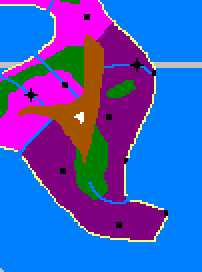
37% human (Kalai)
20% human (Marinan)
18% halfling
10% gnome
7% goblin
5% hobgoblin
3% other
National Languages: Common, Kalai, Celestial
National Cult: Bast
Zefristan was officially founded in 1189, at the conclusion of the Kalai Revolution, as a refuge for victims of class discrimination in Kalastan and Marinans displaced by the Kalai monarchy. However, it quickly became a haven for those seeking religious absolution. The Kalai rebels had marshalled under the church of Bast and they were supported by the successors of Sophitia Verdorbanon, so the church had become the core of the new state's government. Poor and devout alike flocked to this land of hope, and all the citizens are supportive of Mother Khema.
Tougoku: feudal monarchy ruled by Shogun Matsumoto Tsurahide
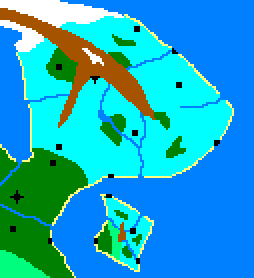
96% human (Tougokujin)
2% elf
1% half-elf
1% other
National Language: Tougokugo
National Cult: Bahamut
The Tougokujin have been allies of the elves for centuries, sharing their border peacefully. However, Tougoku was in a constant state of unrest for centuries before the War of the Apocalypse. In 793, though, the hero Kazemaru managed to unite the nation by the use of his Ukami Warriors, an elite society of fighters whose mobility and secrecy allowed them to prevent many uprisings and ensure that Kazemaru's righteous decrees were carried out peacefully.
The people enjoyed prosperity for twelve years, but with the rise of Samael, Kazemaru was imprisoned by Samael and the Ukami were infiltrated by his agents. They placed one of the Apostles in Kazemaru's mountain citadel, but he went into hiding when Samael was at last defeated. When Kazemaru was released, he returned to his work with the Ukami, entrusting the power of rule to one of the heroes of the age, Matsumoto Tsurae.
Nowadays, the Matsumoto dynasty still reigns over a peaceful nation that has yet to adopt the use of firearms.
Ikalia: monarchy ruled by King Katoka Akawa
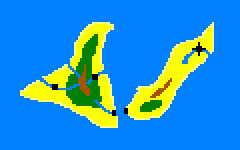
96% human (Ikalian)
2% human (Kalai)
1% half-elf
1% other
National Language: Ikalian
National Cult: Tiamat
Ikalia, due entirely to its geographic location, has always been isolated from the rest of the world. As a result, the development of their technology was slower: at the time of the War of the Apocalypse, they had barely entered the iron age.
At that time, Ikalia was ruled briefly by a charlatan outsider who had talked his way into power. And when Samael summoned ten archfiends to the mortal realm, it was Demogorgon whom he sent to subjugate the islands of Ikalia. Wave after wave of aquatic fiends crashed against the fortresses of the mad king, until finally the land was liberated from madmen and monsters alike by the cult of Tiamat. Since there is a small community of red dragons inhabiting the volcanic regions, they had a particular interest here. Tiamat has since become the patroness of future legitimate Ikalian kings.
Though the nation remains quite isolated, many expect that the production of steamships will increase the rate of travel -- and trade -- to and from Ikalia.
Religion
Bast (NG)
Good, Strength, Protection, Healing, Community
Favored Weapon: Greatsword
Areas of worship: Polis, Noctaeia, Kalastan, Zefristan
Bast is the goddess of fertility, motherhood, and protection. She reached global prominence following the War of the Apocalypse, in which one of her followers, Sophitia Verdorbanon, was a great heroine. The message of hope and peace brought by Sophitia to the world attracted a great many idealist followers. It is even said that, in one instance, Sophitia was rescued personally by her goddess. Prominent members of the church are typically women, though they do not discriminate.
Heimdall (LG)
Good, Law, Strength, Protection, War, Glory
Favored Weapon: Longsword
Areas of worship: Polis, Marina, Zwergheim, Westreich
As the herald of Ragnarok in dwarven folklore, Heimdall's followers played a major role in rebuilding after Samael's wave of destruction. Comprised of many psionically sensitive warriors who believed that they were destined to help save the world at this time, they helped to secretly organize many of those who resisted Samael and his minions, and they escorted many refugees to save havens. Since Ragnarok is believe to be a cycle, Heimdall's church is ever on the lookout for the next doomsday threat.
Bahamut (LG)
Good, Law, Air, Protection, Luck, Cold
Favored Weapon: Heavy Pick
Areas of worship: Polis, Kalastan, Tougoku
Bahamut is the patron of metallic dragons and the guardian of justice in the world. It is known that Bahamut is a bitter enemy of Samael, even going so far as to cooperate with Tiamat against him, because when the two were just wyrmlings, it was Samael who murdered their mother, the primal Mother Dragon. But since the threat of Samael has passed, he is at odds as ever with his sister. The gold dragons who serve to execute Bahamut's will in the mortal realm once guarded the Lance of Amon, the only weapon that was able to destroy Samael; though the Lance is long gone, the dragons live still on a small volcanic island well off the coast of Tougoku.
Loki (CE)
Chaos, Evil, Trickery, Fire, Destruction, Madness
Favored Weapon: Dagger
Areas of worship: Marina, Noctaeia, Westreich, Goblins, Favonia
In direct opposition to Heimdall, Loki was believed to be an instigator of Ragnarok. One of the three families of the Marinan mafia were particularly devoted to him, and their don was especially interested in precipitating Ragnarok early in 805, though he was killed before the return of Samael. While nobody does so publicly, Loki is generally revered by the thieves, gangsters, and pirates of Marina.
Tiamat (LE)
Law, Evil, Trickery, Destruction, War, Domination
Favored Weapon: Heavy Pick
Areas of worship: Marina, Goblins, Ikalia
Much to the surprise of many, the cult of Tiamat played a rather heroic part in the War of the Apocalypse. Because Samael was responsible for the murder of her mother, Tiamat was the only evil deity who didn't side with him. Instead, a number of her devotees, each riding a different chromatic dragon, took it upon themselves to unsummon -- by way of direct combat -- most of the ten archfiends called by Samael. The goblins and Ikalians give her great worship in return for these acts, but while those heroes are given their due respect, worship of Tiamat is frowned upon elsewhere.
Hecate (TN)
Knowledge, Magic, Creation, Oracle
Favored Weapon: Dagger
Area of worship: Noctaeia
Hecate is the patroness of all magic that is prevalent throughout the world, though she is only given official status in Noctaeia, whence many of her greatest scholars have come, and whose royal house is said to be built on a foundation of the arcane. She is often associated with the moon and with wolves.
Music is Eternal Wind from Final Fantasy III by Nobuo Uematsu.